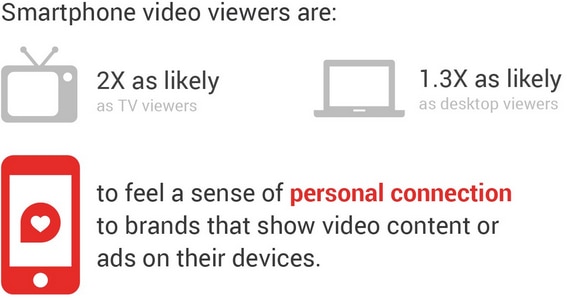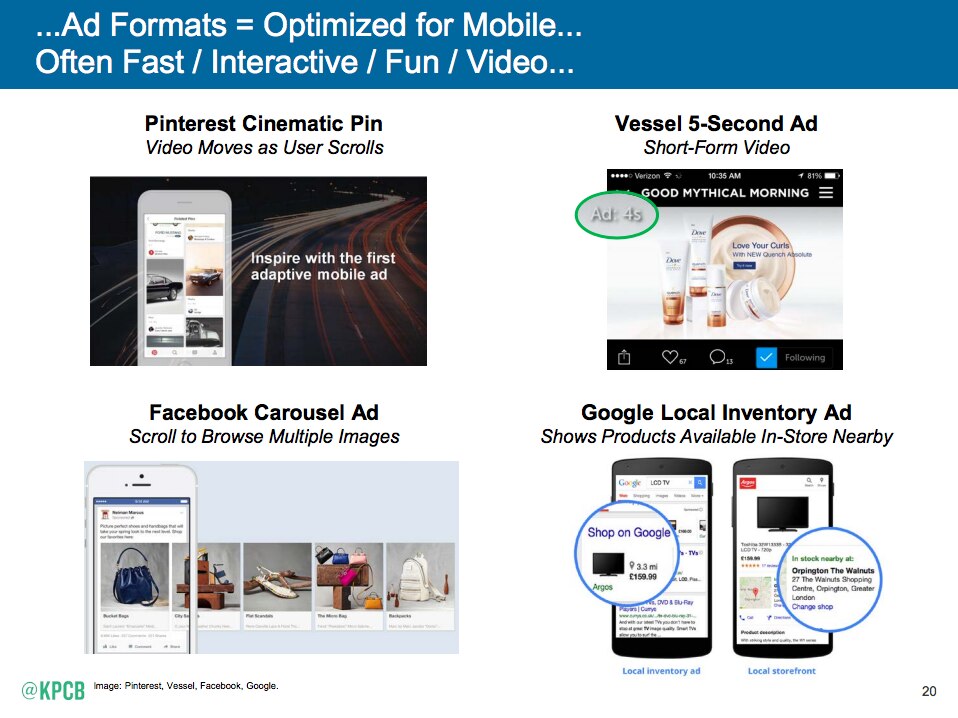Past the mobile tipping point
“Mobile is to overtake fixed Internet access by 2014” – that was the headline summarizing the bold prediction from 2008 by Mary Meeker, analyst at Kleiner Perkins Caufield Byers who reviews technology trends (this is the lastest one, published May 27). We’re now past the mobile tipping point as this report from comScore shows, so it’s no longer a case of asking whether mobile marketing is important.
We know it is.
Most movies and TV shows have been developed for very large screens over the last 70 years. That business is flat, claims YouTube. Now, ten years after launching its service, YouTube’s emphasis is firmly on a smaller screen. Robert Kyncl, YouTube’s Head of content and business operations, put it like this:
“For us, most of our focus is on mobile: product development for mobile, content development for mobile, making sure mobile video works on carrier networks all around the world. It’s all mobile, mobile, mobile.”
Mobile watch time growing nearly 100%
Half of YouTube’s views are already on mobile devices, with mobile watch time growing nearly 100% in the past year, compared to growth in overall YouTube watch time of 50% in that period.
“Our mobile growth has been so strong in the U.S. that YouTube now reaches more 18-49 on mobile alone than any cable network,” said Susan Wojcicki, CEO of YouTube.
But it’s not only about the videos
News delivered in clips has become the fit for many who want to know what’s going on without spending too much time in front of a screen. YouTube provides a venue for international news and opinions on news to travel far, fast and widely.
Openslate found five news YouTube channels using its Emerging Talent Tracker tool. Number 1 of these emerging channels is SecularTalk – news seen through the eyes of a “progressive talk radio host, social Democrat, militant agnostic and secular humanist.”
Although motion-picture content might seem an important attractor to YouTube, a lot of younger users see YouTube as music streaming service rather than a video streaming service. 83% of 16-24 year olds use YouTube as a music platform rather than a video platform, research from youth insights consultancy Voxburner has found.
Marriage with advertising
When it comes to digital video viewership, mobile’s small but mighty screen is having a profound impact. Millennials are two times more likely to be focused while watching video on mobile than while viewing it on TV. To them, mobile isn’t the second or third screen. It’s the first.

And something amusing happened on the way to the small screen: vertical viewing suddenly became a big deal. For instance, full-screen vertical video ads on Snapchat equals 9 times higher completion rate vs. horizontal mobile video ads, according to Mary Meeker. Ad formats are being optimized for mobile, often fast, interactive and fun. Buy buttons minimize friction to purchase at the moment of interest.

Robert Kyncl positions YouTube as a successor to the traditional entertainment industry in its ability to marry content with advertising, only this time around on a different set of devices.
Do you want to know why online video is a must-have for your mobile marketing strategy? Also, here you can learn about smartphone adoption and usage across 48 countries. Create custom charts to deepen your understanding of the mobile consumer and get the data you need to guide your mobile strategy. And Pingdom’s RUM feature will complement your decision-making nicely.

Getting in early
Mobile may be YouTube’s big growth area, but the company prides itself on getting in early to new technologies: it started supporting videos shot in 4K resolution in 2010, for example. In 2015, it’s exploring 360-degree video and virtual reality.
Robert Kyncl praise the Google Cardboard initiative, which provides build-it-yourself cardboard VR headsets designed to use smartphones as the screen:
“It’s a very basic and simple thing but it makes you think about video differently”, he says, adding that YouTube intends to continue experimenting with 360-degree videos with some of its creators.
Mark Zuckerberg, Facebook’s Chief Executive, has on several occasions said he believed virtual reality could be the next computing platform. That belief is enough to drive significant investment.
“The shift from desktop to mobile caught so many off guard and so dramatically impacted the competitive landscape, every tech and media company is going to have to be prepared for just the possibility that VR/AR will become the next platform”, wrote Ben Schachter, an analyst with Macquarie Securities.
“We think that phone is the remote control for your life and it’s definitely the remote control for your video”, says Robert Kyncl.
What’s your take on on-the-go mobile consumption and how will it impact your business? If you currently don’t have end user monitoring to help you with monitoring mobile consumption then you are missing our.
























